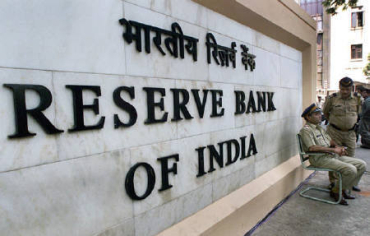
Government-industry relations seem to be hitting a new low. But without co-operation, a recovery in 2012-13 will be impossible, says former chief mentor of CII, Tarun Das.
The year 2011 has been a horrendous one for the world and for India. But the real economic pain has come from several other factors.
First, India's growth is fuelled by its domestic economy -- home demand and consumption. If these rise, growth is good. If these fall, growth declines. Demand is depressed, as also is industrial production -- and, therefore, growth.
Second, high inflation is a genuine reason for interest-rate increases. The Reserve Bank of India has limited room to manoeuvre, and has used rate hikes to stem the tide of rising prices. The results are clear: inflation has been arrested but growth and production have fallen.
Third, both forecasts and sentiment have become increasingly gloomy, hence investment is on "hold" mode. This has added to declining growth.
Fourth, high inflation has been caused by high commodity and food prices. The way to manage and minimise its impact would be to build stocks through advance action, storage and distribution -- an operation both national and decentralised. This has not occurred.
. . .

Fifth, economic reforms to fuel growth, requiring adoption through law, have been held up because of differences between the Opposition and the government. As a result, the goods and services tax, the direct taxes code and so on are held up.
Sixth, some economic initiatives are also held up because of lack of agreement within the ruling coalition -- for example, pension reform and retail foreign direct investment (FDI).
Given this backdrop, what has industry done in recent weeks and months?
Industry has complained. Industry has criticised. Industry has expressed concern. Industry has appealed for political parties to come together. Industry has urged action, including legislation, policy initiatives and policy changes, such as on monetary policy. Industry has made recommendations.
At the meeting of the prime minister with business leaders on December 22, the prime minister expressed – in his usual low-key but clear way – that negativism and criticism by industry only add to lower confidence and sentiment. And he sought industry's partnership and engagement rather than criticism.
. . .

Thereafter, the Election Commission announced the dates of voting in a round of state Assembly elections that goes on till March 3. The Union Budget date remains open.
Up to March 3, therefore, the government has to follow the Election Commission's Code of Conduct. And any public statements made by industry during this period with regard to sentiment, confidence and so on could be seen to have political dimensions.
So, within this framework, what can industry do to spur economic growth? We must understand clearly that nothing new can be done about 2011-12. The agenda must be for 2012-13.
First and foremost, engage the government: going beyond the ritual of formal consultations. And, if this is to be done on a mutual trust basis, media and publicity must be avoided by industry. Be quiet, be honest, be discreet, be a partner.
Second, the Union Budget 2012: meetings are scheduled, but the need is to go beyond the formal consultations. The government usually welcomes informal, data-based suggestions. Industry has 30 days to do worthwhile work. No more.
. . .

Third, infrastructure: a key driver of growth, and a key bottleneck. The agenda now should be for industry to analyse 50 infrastructure projects and their status, project-wise -- and to then put forward specific recommendations to expedite implementation of individual projects. This is micro-work, not macro; the focus is on the "how" of implementation.
Fourth, the top 100 Indian companies have investment plans. These are on hold. Industry should engage each company, collect data on investment proposals, status and problems and bring these to the government to resolve, company by company. This is a 90-day agenda of work.
Fifth, the small and medium sector, representing true Indian entrepreneurship, is in real pain. And these units are scattered around the country -- decentralised, but in clusters: Mohali, Gurgaon, Coimbatore, Chennai, Jamshedpur.
At least 50 such clusters exist, and the need is to set up industry task forces to connect with small and medium units, get their feedback and help resolve their problems -- again, micro-work. With a real sense of urgency, major difference is possible. Energising small and medium enterprises will bring growth.
Sixth, MNCs: They are the carriers of crucial FDI, and hundreds of them operate in India. Their expansion and growth is the fast track to more FDI -- and more production, employment and growth.
. . .

There needs to be immediate engagement with at least 50 MNCs -- individually -- to assess their investment plans and constraints and, actually, work to resolve these in consultation with government.
Seventh, the public sector is a huge resource and an asset for the country. Many public sector undertakings (PSU) are strong and competitive.
Many more are sick, stagnant and need turnaround plans to be implemented. An empowered task force needs to engage PSU units, selectively and individually, to perform exactly the same exercise as for the private sector and MNCs.
PSUs can boost production and help bring new growth to the economy -- especially because these are some of the largest companies in the country.
Eighth, what about exports out of India, even though India is essentially driven by the domestic economy? One country in the world is still growing at a very high rate: China.
. . .

It is time for India to have a real action plan on China -- China as a country, and provinces of China as regional markets. The year 2012-13 should witness real growth in exports. It's possible.
Ninth, and finally, industry needs to build a deep partnership to expedite rural development programmes. This will enlarge the economy, reaching out to 600 million people in the rural areas, thereby adding to growth.
In conclusion, India can get back to eight per cent-plus GDP growth in 2012-13, but that will not happen with press statements -- which, in any case, are taboo during election time.
It is not possible unless the government and industry working together becomes a reality. And it can only happen if industry and the government get "micro" and work diligently and quietly to rebuild growth and confidence.
It has been done before; it can be done again. This should not be about scoring points or one-upmanship. This is about teamwork based on quiet work.
The author is former chief mentor, Confederation of Indian Industry.